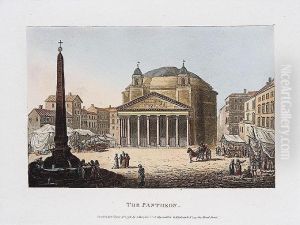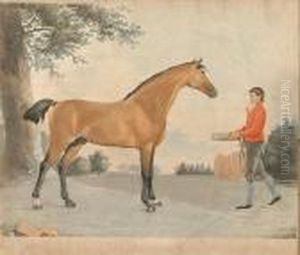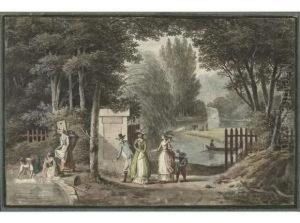J. Merigot Paintings
J. Merigot is an artist whose precise dates of birth and death are not clearly recorded, but who is known to have been active during the late 18th and early 19th centuries. Merigot is primarily recognized for his work as a printmaker, with a particular focus on aquatint engraving. This technique allowed for the creation of prints with a rich tonal range, resembling watercolor paintings, and was popular among artists who specialized in topographical and architectural subjects.
Merigot's work often depicted landscapes, cityscapes, and architectural vistas, capturing the aesthetic and cultural essence of the locales. While the full scope of his biography is not well-documented, his prints have been collected and studied by those with an interest in the printmaking techniques of the period as well as the historical significance of the scenes he chose to represent.
Merigot's prints were sometimes included in travel books and other publications that aimed to illustrate the grand tours of Europe—a popular pastime for the wealthy elite of the period. These works provided a visual record of significant sites and were aimed at an audience with an appreciation for both art and the burgeoning field of travel and tourism.
Despite the lack of comprehensive biographical details, J. Merigot's contributions to the art of printmaking have been acknowledged in the context of the aquatint medium. Art historians and collectors continue to attribute certain works to Merigot based on style, subject matter, and technique, and his prints remain of interest to those studying the period and the genre of topographical illustration.


